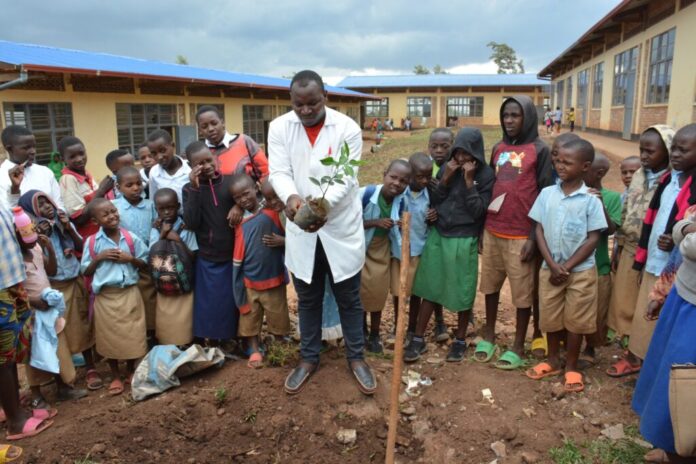By Henry Owino
Nairobi, Kenya: Young people are disproportionately affected by the climate crisis. The voices of young Africans are often unheard in public discussions and political arena where decisions on climate change impacts, adaptation and mitigation are deliberated.
The best way to reach out to these groups of young people to consider their thoughts is at the learning institutions especially primary and secondary schools for climate change discourse. In Nairobi, many schools mostly located at Kibera, the largest informal settlement in Africa, are practicing various methods of environmental conservation to reduce impacts of climate change.
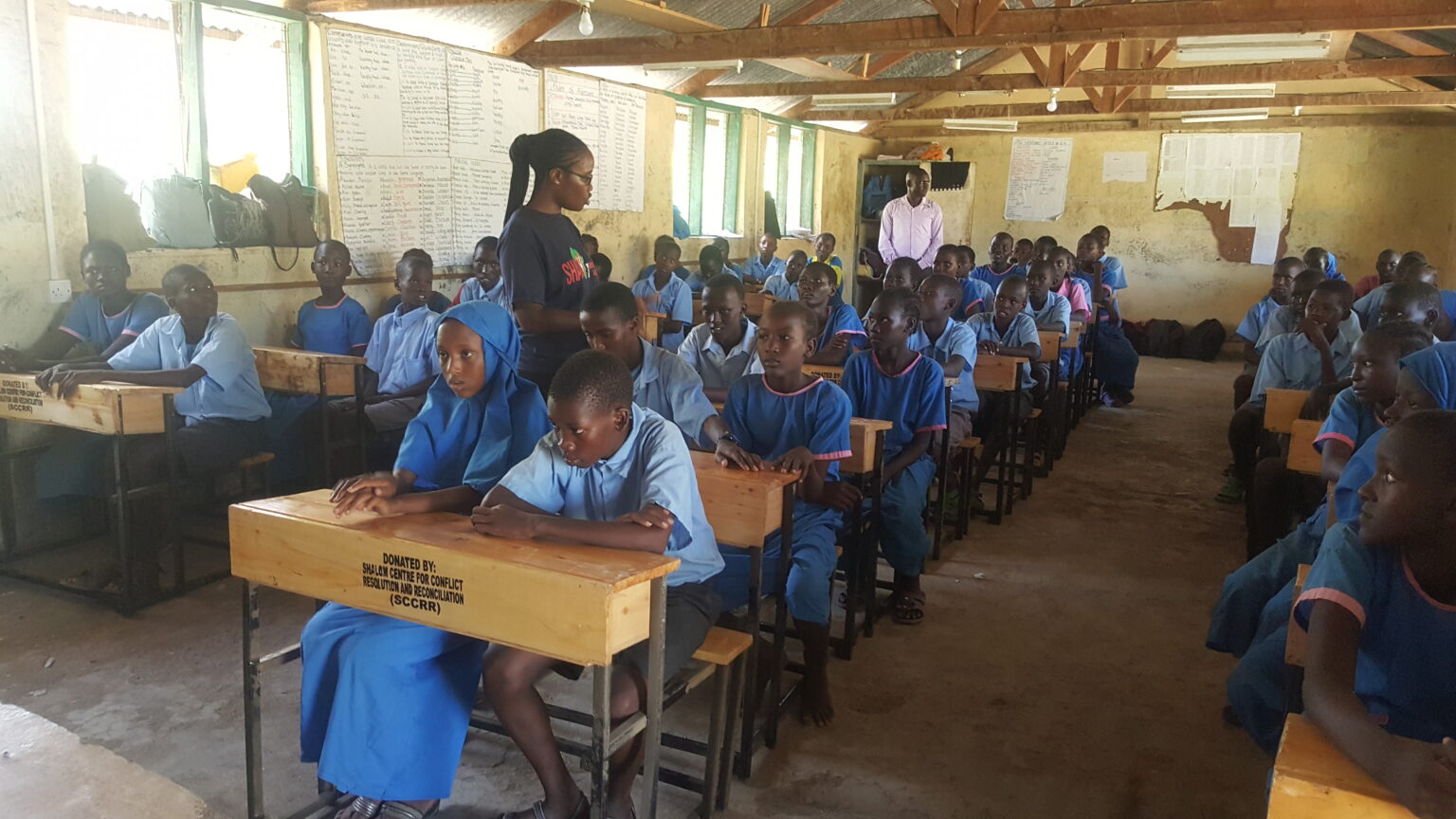
Kenya’s National Climate Change Policy (Sessional Paper 3 of 2016) emphasizes climate change mainstreaming in all sectors to build adaptive capacity and resilience. Incorporating climate change into education curricula is therefore a necessity. More so, developing a model for integration of climate education into national primary school curricula.
To this end, tree conservators and stakeholders have been encouraged to collaborate with the government to incorporate climate action to learning institutions. The Kenya Government also initiated planting of 15 billion trees by 2032, aimed at; reducing greenhouse emissions, stopping and reversing deforestation and, restoring 5.1 million hectares of deforested and degraded landscapes in the country.
Prioritizing Climate Change Education
During a Nairobi Summer School on Climate Justice Symposium at Kenyatta University recently, Education Cabinet Secretary (CS) Ezekiel Machogu said the government is committed to complying with the 2021 Berlin Declaration to have environmental education a co-curriculum component by 2025.
As a result, Machogu said the Education Ministry had to update books and other educational materials that integrate climate change topics. Books are a good source of content for learners, but tutors make them practicable.
“Integrating climate change into the education system, it must focus on multiple disciplines, including agriculture, environmental science, economics and policy to foster holistic understanding. To achieve this, teacher training curricula must also integrate climate change,” Machogu emphasizes.
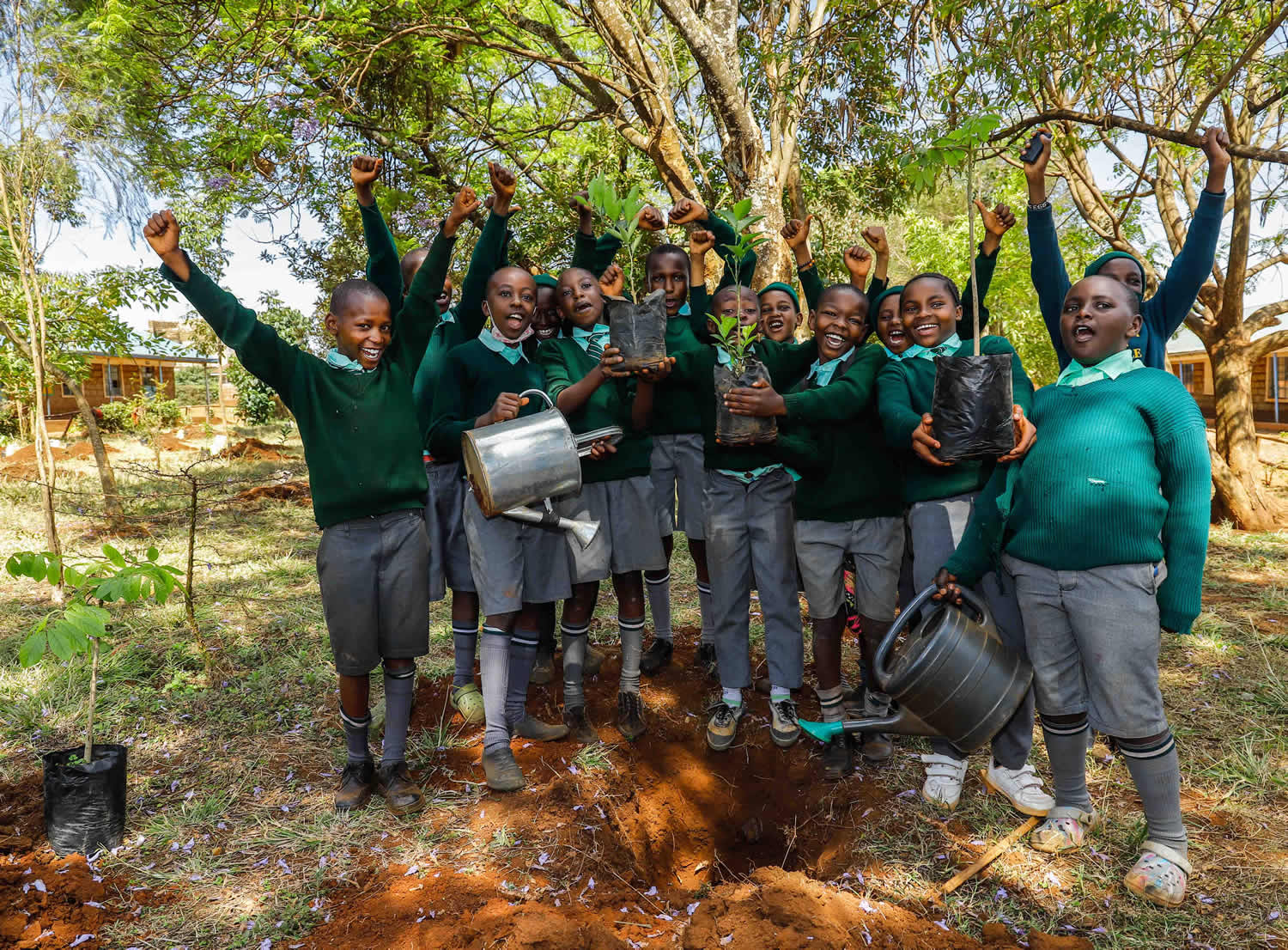
The Education CS urged teachers to come up with modalities that create environmental champions among school-going children to encourage them on the importance of growing and nurturing planted trees.
Young people are best placed in realizing this mission and vision, since it is important to cultivate the culture of environmental conservation and management at a young age. Nurturing the young generation with skills of combating climate change impacts, may open new ideas and approaches more likely to generate innovative solutions to problems.
Nevertheless, key education actors admit that since Kenya is a signatory to the Paris Agreement, educating more people about climate change instills a sense of global responsibility. They unanimously agree teachers are Kenya’s sure bet to achieve the goals.
Their main concern, even with integration of climate change into education curricula, the Kenyan government must consistently pay teachers well, train and let them equip the next generation with knowledge and skills needed to mitigate and adapt to climate change.
Teachers Essential for Attaining Climate Action
Teachers are key in achieving these goals because they actively participate in curriculum development, especially at the Kenya Institute of Curriculum Development. They can use extracurricular activities such as drama and music festivals, besides environmental clubs and science contests to build capacity and encourage innovative climate solutions.
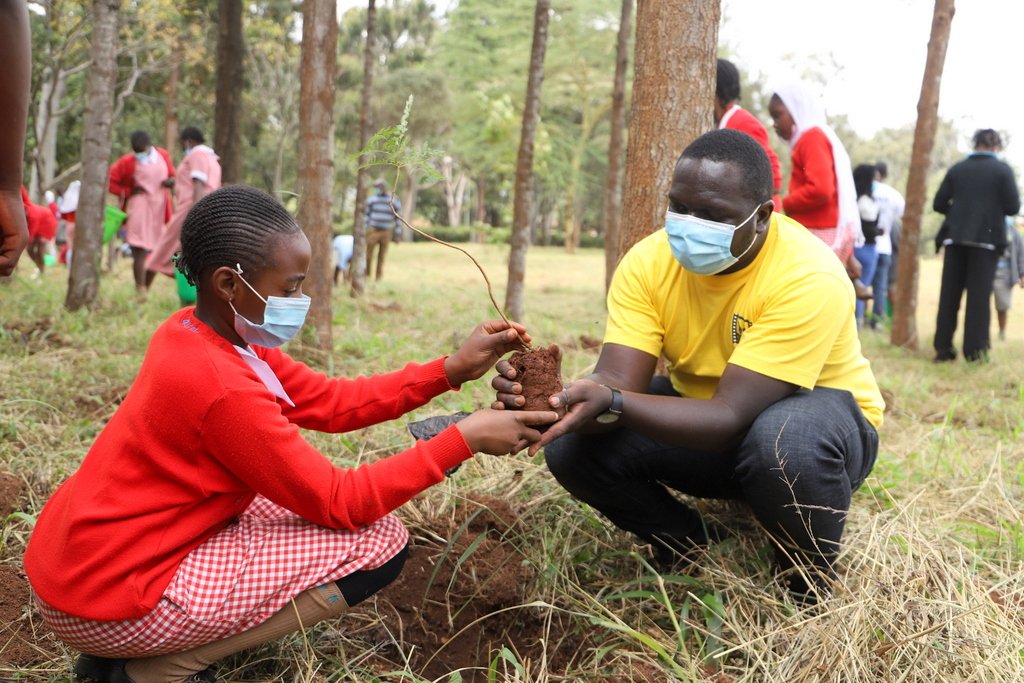
Most schools in the Nairobi region are already implementing this with teachers at the forefront training learners on the subject matter. For instance, schools in Kibera, apart from teaching, are marked with murals about climate change impacts, mitigation and adaptation strategies.
The artwork on the walls resonates well with learners and residents on effects of climate change to their environment. Kibera slum is vulnerable to floods yet home to more than a half a million people. The environment is disgusting with filth of waste pollution and poor drainage systems hence most prone to flooding.
There are five public primary schools which are densely populated with children mostly from poor families. Many schools are privately owned and learners come from well off families who are equally affected by the worsening climate crisis.
Generally, life in Kibera is anything but easy, yet a stern determination for a better future is beckoning, especially amongst the younger generation. The determination is to change the current situation of environmental challenges precipitated by human induced climate change.
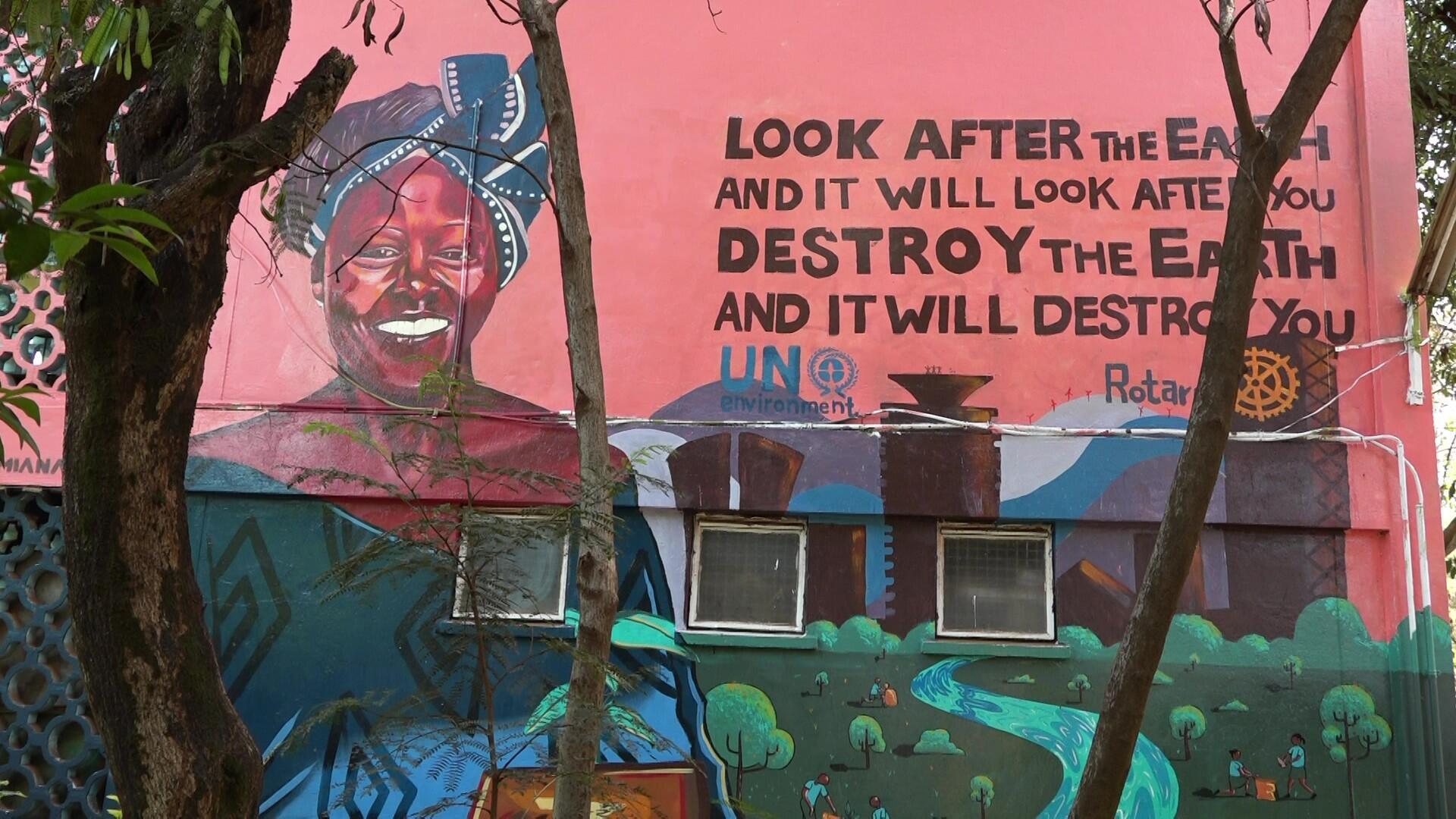
These school-going children represent the strength and glimmer of hope to Kibera residents. They are curious, energetic and daring to be technologically innovative to solve severe climatic conditions.
Action for Climate Empowerment
Mr. Daniel Ochieng, Principal at Magoso Primary School in Kibera says the area is among the vicinities always hit hard by climate change impacts in Nairobi. The consequences have compelled the school administration to introduce climate mitigation strategies to learners as co-curricular activity to impede extreme weather intensities.
Mr. Ochieng explains school administration consulted parents, sponsors among the education stakeholders and informed them that pupils go through climate change mitigation lessons just to evade any rebellion. The message was welcomed and to date learners are aware of the risks associated with extreme weather patterns.
Pupils know their future lives depend on nature conservation hence the dedication and commitment to make that change now. The pupils understand the responsibilities of planting and nurturing trees to transform the country both environmentally and economically is in their hands.
“Learners have since realized their potential and opportunities in harnessing climate action with their academic work can save the ecosystem. Although the approaches put in place may not absolutely offer lasting solutions to climate change, it has helped minimize extreme weather impacts,” Principal discloses.
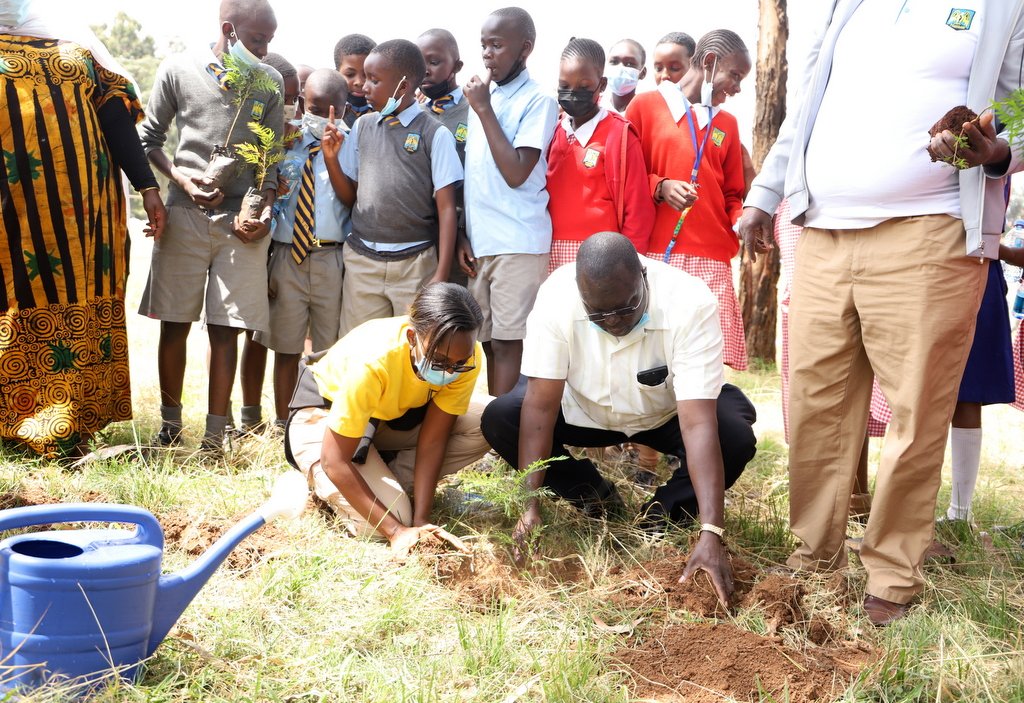
Mr. Ochieng who is also the Patron for Environmental Club, describes the aim of acquainting learners with climate action initiatives has been to achieve three main objectives: Introduce practical teaching and learning tools for climate change education in primary schools; Cultivate students’ interest in developing climate innovations through regular competitions and inter-school engagements such as climate clubs, debates to mention but a few.
The initiative began in April 2021 amid Covid-19 Pandemic and developed an informative, useful, and locally contextualized resource pack, which includes practical and playful activities like growing food in school. This resource pack purposefully includes relevant school trips to help pupils understand the reality of climate change impacts in parts of Kenya.
Furthermore, the activities are problem-solving related to local climate impacts. It helps in teaching with urgent responsiveness needed as climate disruptions worsen.
“We ensure that the content covers the drivers of climate change, so that pupils and teachers understand the root causes, impacts, challenges and possible mitigation or adaptive aspects both locally and global contexts,” the Principal explains.
Approaches in Combating Climate Change
The schools have been promoting eco-friendly practices through various initiatives such as in-school recycling of organic waste into fertilizer, declaring school compounds as plastic-free zones, growing trees one’s age plus class population, water management, energy conservation by increased use of renewable energy, protecting nature through using energy saving stoves at school kitchens.
Others include; walk-to-and-fro school campaigns, encourage bike-cycling among students and teachers, creating awareness through music, debate, drama, artwork messaging on walls, termly community clean-ups, participating in public fora to educate community and pupils invented initiatives.
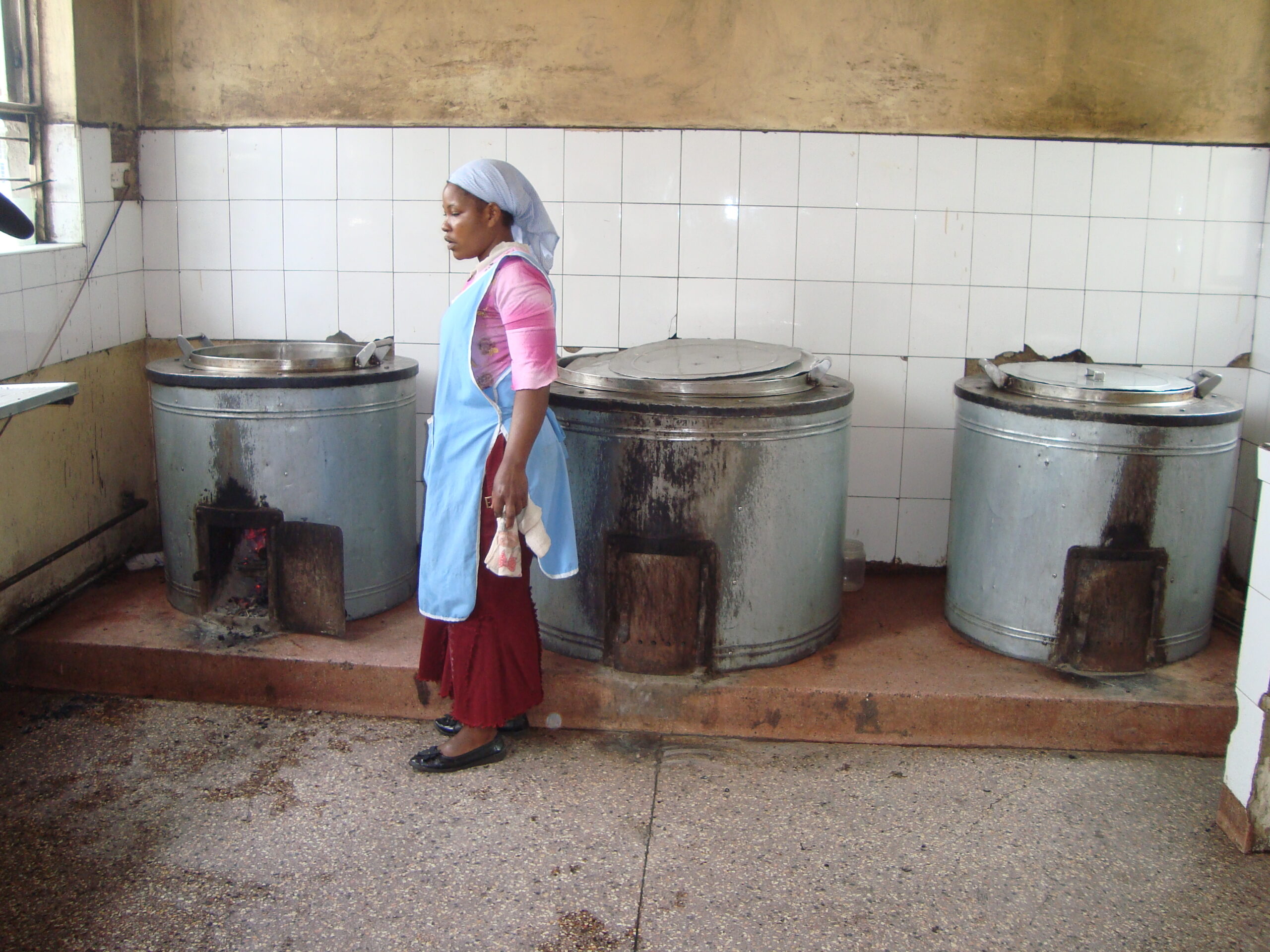
Some schools in Kibera have their food scraps collected to be composted rather than taken directly to the landfill. The compost is used to enrich the soil of school gardens and parks. Food scrap composting has been an effective method of reducing the amount of food waste that ends up in landfills emitting methane- greenhouse gas.
According to Mr. Isaac Agalo, Director of Shammah Splendid Centre and School located in Kibera, his students founded Kibera Waste Recyclers. This was after observing the amount of waste paper schools around generate from notebooks and printed material which are burnt in landfills, releasing greenhouse gasses.
As a result, it has improved waste disposal from collection, sorting, transportation for treatment to recycling firms that transform it for other re-use. The money received from waste papers assists in paying electricity bills but currently the school is minimizing paperwork with the introduction of a computer laboratory.
“In order to implement the idea of waste collection fully, we collaborated with the local community waste pickers and neighboring schools to collect waste papers fortnightly in designated collection bags from various schools for recycling. Benefits attracted residents who sensitized the community on proper waste disposal and encouraging recycling,” Mr. Agalo discloses.
In addition, our school nowadays consumes less firewood, less time and heats more food equivalent to one mature tree per week to 300 students daily, thus contributing to forest conservation,” Mr Agalo affirms.
“In an effort to reduce environmental pollution and deforestation, our students innovated conversion of waste papers and sawdust into briquettes. It is pollution free and briquettes energy lasts longer when cooking our meals,” revealed Patron teacher,” Soft-spoken School Director states.
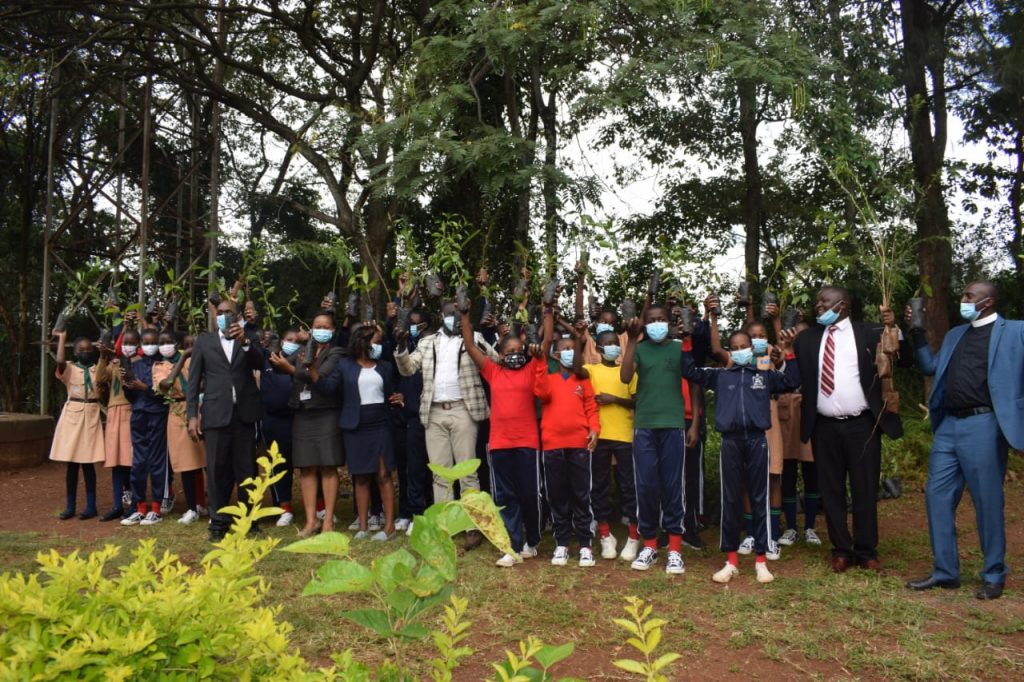
Making Learners Climate Action Agents
Lavendah Khasoa, Form 4 student confirms that their school provides learners with opportunities to be as creative and innovative as possible for competitive platforms such debates. It elevates their voices on matters of climate change and the school has been recognized for solutions-based ideas on environmental conservation.
“Our students are encouraged to make informed decisions and be responsible for their actions to ensure environmental integrity. Through contributing to environmental conservation, we have won awards, and every year we tour local National Game Parks and Reserves courtesy of AFEW Giraffe Centre to learn more on wildlife and ecosystem,” Khasoa attested.
Hamisi Juma, a Form 4 on the same breath boastfully repeated all recognitions they had received in relation to climate action. He said many other schools in the informal settlement are embracing their school solutions to severe weather patterns and skills action based.
“As students, it has in turn enriched our attitudes and values towards climate actions sustainability. Community around also appreciates the clean environment, increase of trees and other vegetation cover that absorbs excess water,” Juma pointed out.
Dr. Susan Gitau, Senior Psychologist and Lecturer at Africa Nazarene University(ANU), affirms that education is an equalizer among human-beings. She therefore asserts climate change education must start with the young who are majority found in primary schools.
“Education is a critical pillar of climate adaptation and mitigation, so it is up to us at higher level to help build the firmest foundation for climate change education at the higher and tertiary institutions in Kenya,” Dr. Gitau emphasizes.
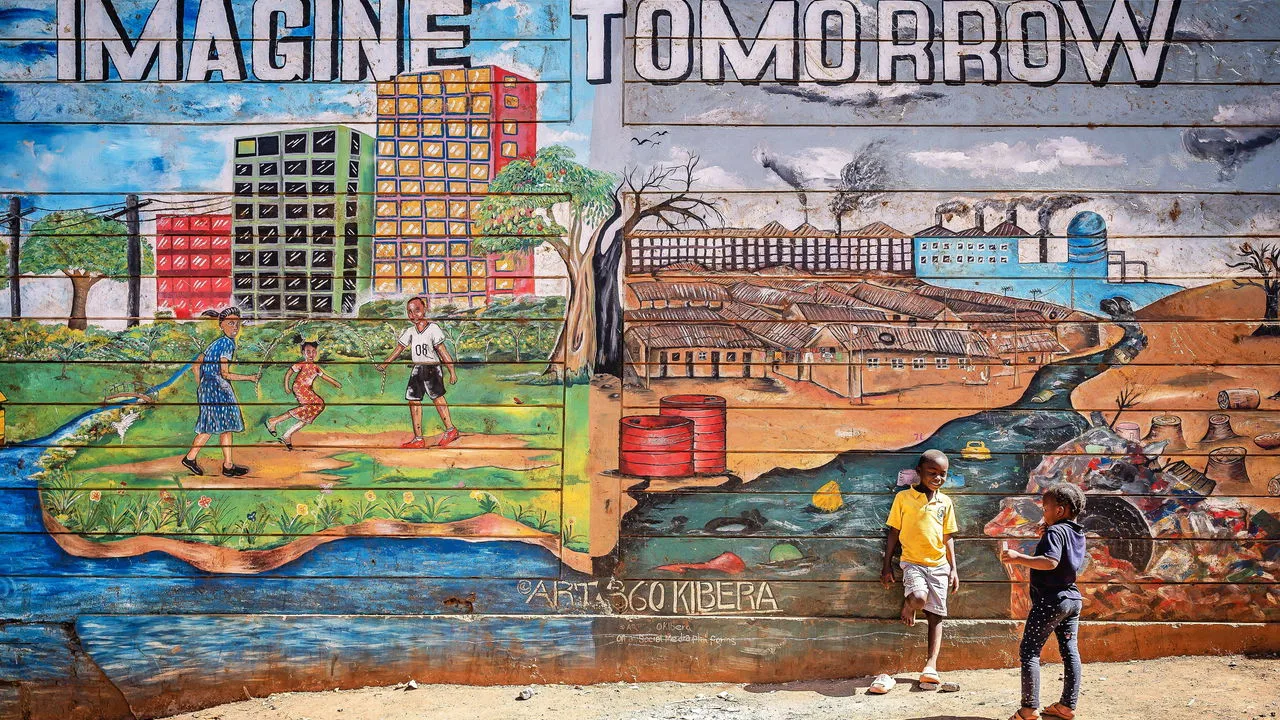
The Don explains pupils learning about nature, climate change, and sustainability theoretically without pragmatism, is unrealistic. It is like the saying; “children are our future” used so often that it almost sounds a cliché, but truer words are rarely spoken.
“Young people are the stewards of the environment in 10 or 20 years to come. The future of our planet will soon be in their hands. Teachers make important impacts in their lives and for our future too,” the Educationalist declares.
Most people applying their trade within Kibera informal settlement nowadays appreciate the clean status of the famous slum. This is because integrated experiential learning approach enabled involvement of learners and teachers to practically implement climate mitigation strategies.
Whereas a green learning agenda has been the starting point for the schools to help solve the different problems associated with the climate crisis, the entire slum is turning out tidy. Everybody else is currently benefiting from the efforts of teachers and learners; government institutions, religious organizations, markets, businesses among surrounding communities.

